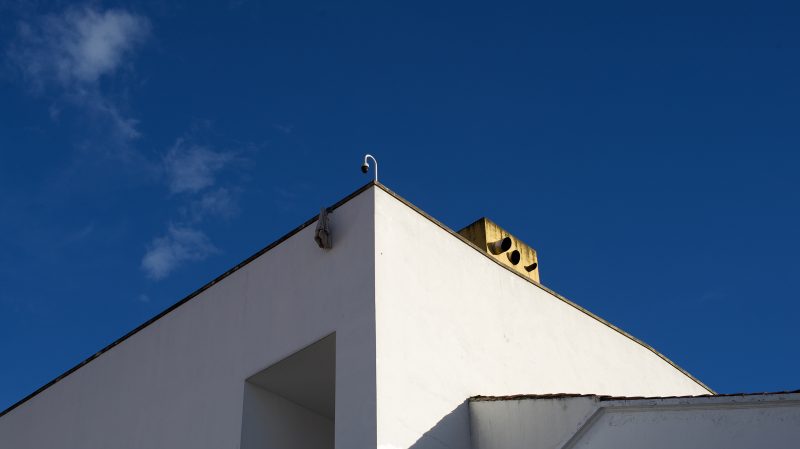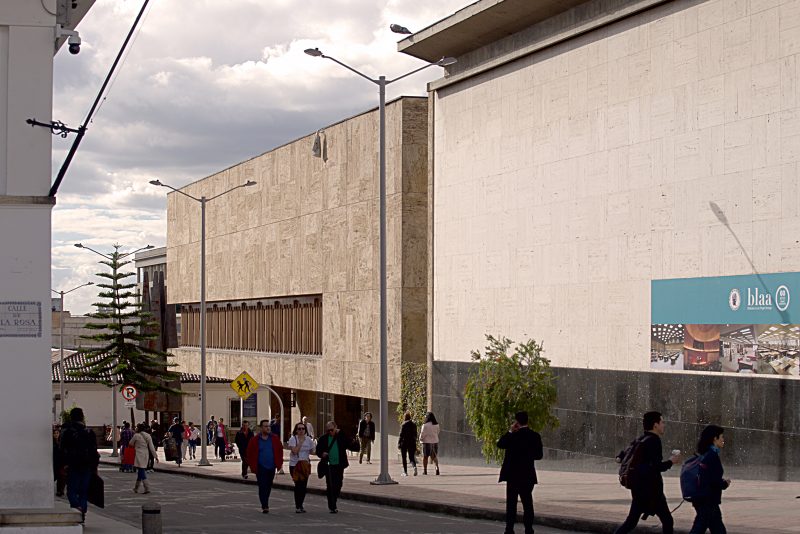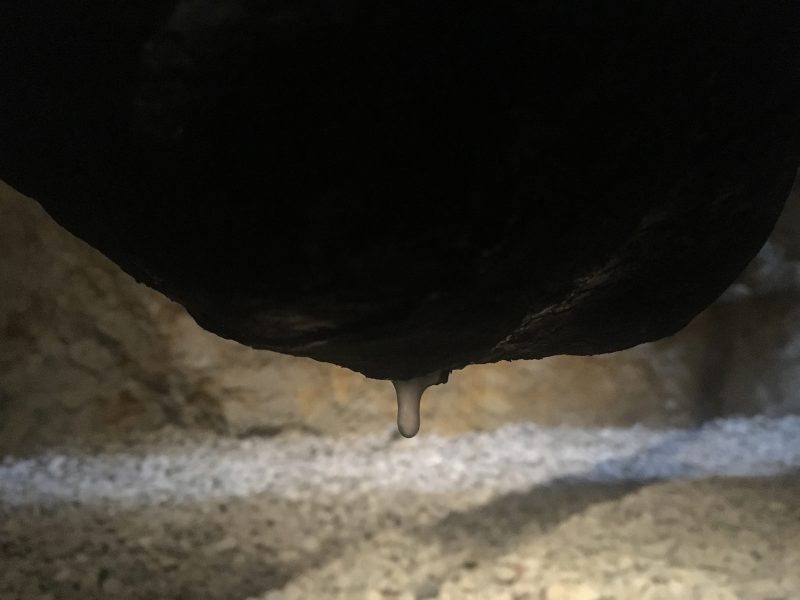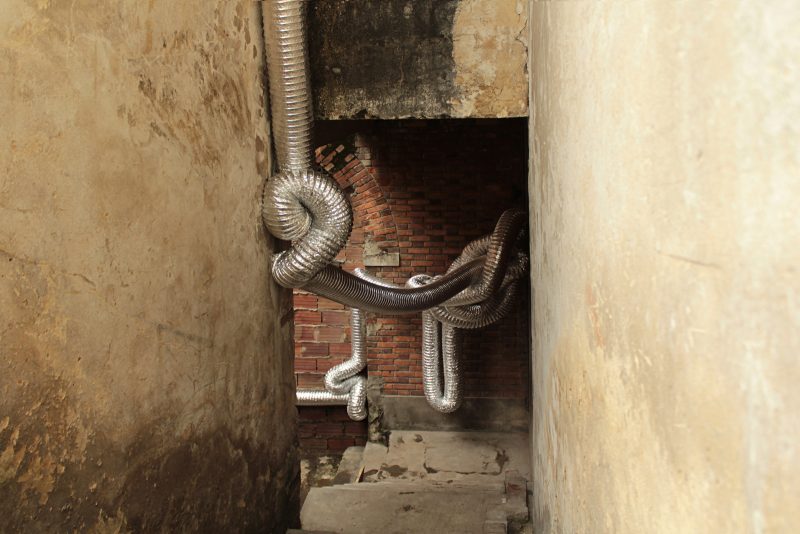
María Leguízamo is an artist and educator who earned her MFA in Sculpture from Tyler School of Art in 2017. She lives and works in Bogotá, Colombia, where she exhibits regularly. In 2019 she was awarded the Ilya and Emilia Kabakov Fellowship in Sculpture.
Morgan Nitz: Your diverse portfolio of work is very thoughtful and has a simplicity in execution. It is very surreal, beautiful. What are your priorities when it comes to artmaking?
María Leguízamo: Thank you for your appreciation of the work! It means a lot coming from a poet like you. The ultimate priority when committing to a project is to find surprise at some point in the process. Most of times, the work begins with an unexpected encounter, texture, situation, material… and that feeling of perplexity linked to a political action is what usually sparks a piece. Sometimes it takes years for me to digest that first encounter or to understand its relationship with a frustrating contingence.
I tend to work from a place of uneasiness towards my context, but the work rarely keeps the political claim on its foreground. I’m more interested in the ways in which our doubts about the status quo can act through objects, attitudes and finally the architecture. Our material life and consciousness carry a mystery that I can investigate through sculptural strategies. There is always a moment of inquiry when I realize normality is just one option out of multiple possibilities. A feather can be the murder weapon or a tool for liberation, depending on the urgency behind it.
The previous example allows me to introduce my habit towards gestures. I frequently commit to summarize the work in a simple action or indication, free from a thorough display of concepts and technical expertise. Nonetheless, when I’m working on a piece, I seek contrast and sensuality because an idea cannot be communicated if there isn’t a skin or tactility that allows for it to touch you in some way.
MN: It is more like you are a curator than a maker. You reinvent objects’ meanings by changing their contexts. You chose walls to mark with your voice and spit, illuminate jackets that you’ve found within walls. What qualifies something as an object of interest for you?
ML: It can be anything in the world… A situation, a word, a color, an attitude… But more than objects, I connect with images. Images of events, accidents, miracles. I tend to look at what’s around looking for unprecedented ways to use or interact with the space and what it constitutes materially, transcendentally and politically. I think that an object of interest is a thing that I can’t understand really. Something that intrigues me, allowing for absurd but meaningful connections.
Throughout the years though, I’ve tuned my search. I’m interested in things that take strength from their own fragility. Entities, bodies that can bend down their oppressor from their absolute difference with it. Most of the time, the smallest, most invisible, hidden, weakest, apparently irrelevant things are what affect our social interactions the most. That is the reason I have used bugs and threads of hair in my practice. That is the reason I am interested in sound and specifically the voice as a force of erosion, of slow but radical transformation.

MN: You’ve made multiple pieces that deal with dripping wood, dripping jackets. Can you tell me more about them?
ML: It all started when I was a kid and someone at my school told me about a method of torture where a continuous drip of water falls onto the forehead of the tortured. Turns out that the persistence of the water drops generates a wound that eventually turns into a hole in the skull. This kind of erosion provoked by humans and related to power dynamics and pain, is a perfect example of how my interest in sculpture blends with a political subject to initiate a research.
The absurd idea of a tear or a lick that can be a weapon or a tool for transformation (if persistent), is fascinating to me. The stuff that leaks (a ceiling, a coat or a piece of charcoal) contradicts the solidity of things that make up our life. The leaking creates cracks or makes them visible, which means that what is contained cannot be contained and eventually overflows, overcoming the limits of its own shape.
Specifically speaking of art objects, I enjoy it when as a viewer, you get to touch the pieces. I like to think that when they drip, the pieces can also touch you. The apparently inanimate becomes alive -animated- and turns into a character that can point out at the fractures in the space.
The continuous dripping that comes from the inside of any object, if persistent, can generate a stain, a print or even a hole carved by liquids, just like the aforementioned story of the torture.

MN: What is the significance of the charred (carbonized) wood?
ML: Two main elements converge in the charcoal pieces. The first one begins with a strong interest in fire. I got fascinated by the fact that fire illuminates, while darkens, everything that it touches. I noticed the way in which fire blurs the limits and details of almost any object, in a way that it’s meaning also becomes darkened, and in a certain way, free from previous definitions.
When I moved to Philly and started speaking English, my interest in language and the “untranslatable” got sharpened by the language barrier. As a collateral effect, I became specifically attentive to things that escaped being named. Things and situations that have more of “somethingness” than a name or single meaning, word, usage or purpose. Something that cannot be named resists being governed.
I started making the charred pieces as a way to blur the original shape and meaning of wood objects that before could be named with predetermined words. The object-word loses its prior meaning through a drastic alteration that also inhibits the language that previously named it. Knowledge and information relate symbolically to light, inspiration and certainty, while darkness usually gets attached to the unknown, hidden, and scary. Personally, I feel more comfortable with the second set of characteristics.
The second element that drove my research was fascination with the coexistence of water and fire. I got excited by the contrast between these two -apparently- opposed elements of nature. We think about water as a way to tame fire, while fire’s warmth evapores water. While observing images of violence I recognized the tight relationship that water and fire can have with tears and urination during disaster and violent transformation(s).
MN: You are a talented wordsmith. Your writerly approach to titling your work is both informative and poetic. Some of my favorite examples include: “this table was meant to be lifted by my tongue so it could be balanced” and “people around the world talking to their farthest acquaintance through the huge wall” Can you tell me more about how writing fits into your practice?
ML: As you know by now, I’m very interested in language. Specifically the difficulty of speech or lack thereof. The table piece that you refer to is a perfect example of that. That was the first time I worked with my tongue and since then I’ve been handling it as a silent and wet muscle (saliva producing), yet an articulator of sounds. At that moment in particular, I was struggling tremendously with my inability to make myself clear, to be understood, and that’s why I thought that my mute tongue could have the strength to lift the sprained table I wanted to use to make work.
I think that my attention to congested speech and its nuances, comes from my interest for sculpture. I’m fascinated by language because it is a form of material transformation that deals with time and image articulated through air. When written, it becomes loaded silence. I love the freedom that writing offers when it comes to speculate images that transcend their visual and material appearance, connecting and relating things that sometimes are impossible to associate in everyday life*.
Has it happened to you that you are confused and discussing it with another provides clarity?? Writing is like speaking with yourself. It requires solitude and being alone is crucial when it comes to digging without shame, morality or another social mirror. That’s when I can find -the strangeness- that can create a breakage of real communication in comfortable normality.
MN: The table is not the only piece you’ve made that deals with balance. It seems like you have an obsession with it. When did this start and why?
ML: I would say that more than balance, vertigo is what obsesses me. There is not a coherent answer for now, but vertigo is a feeling that I’ve lived with for as long as I can remember. I try to find it, like someone that organizes their room before starting to work. But I know that balance is relative and probably impossible.
I think there is a sort of magic that happens when something is about to fall. Maybe that sway is another way of balance, like houses built on unstable land so the foundations have to be unfixed. The foundations have to sway in order for the building to be anchored to the ground.
MN: You recently won the Kabakov award to return to Philadelphia and work with your band Peebls, which is why I was lucky enough to spend time with you and bother you for an interview. Can you tell us about Peebls and what the group aims to accomplish with their music?
ML: Ahhhh!!! Peebls! It is a beautiful encounter with brilliant and beautiful people I met at Tyler School of Art in Philly. It is an intersectional feminist band for children of all ages. Its members are JoJo Batelliere, Maia Chao, Kelsey Skaroff, Teresa Cervantes, Lisi Raskin, Jorge Galvan, Daniel Stern, Filipe De Sousa, Daniel Zentmayer and me.
We want to sneak into the mainframe of the world to rearrange the brain of ourselves. That is the song that explains our direction, I think. Lisi wrote the lyrics.
I can’t speak for everyone in the group, but we know how important it is to share a safe space where togetherness is key when trying to accomplish anything. We are releasing our first demo on bandcamp now! Go listen and you’ll know what we’re trying to accomplish for real, or at least you’ll get a tickle of it!

MN: What’s next for you? What are you working on?
ML: Ayyyy Morgan! I’ve delayed these answers so long that everything has changed so much! Right when I came back from Philly and Providence in July 2019 (from recording the Peebls album), I had an appointment to start the install of a sound piece for the “45• Salón Nacional de Artistas” of Colombia and I haven’t stopped working since then. The project was placed in an abandoned pasta factory in front of a public square, an important historical spot (Pastas el Gallo in Plaza España, Bogotá). I started thinking about sound because public squares are places where voices are amplified, as well as political actions and social urgencies. I ended up making a huge speaker made out of aluminum ducts that resembles a gut. I was focused on materializing the exercise of eroding the building with the sound and continuous vibration of a ghostly presence crafted from the observation of the context.
After that, I worked on a solo show named “suelo hacer daño”. Excuse me if the translation is too rough but I didn’t find a better version. In English it would read something like “I usually make harm”. I’m interested in plasticine as a construction material and the show was the first approach to that idea. It is soft and solid at the same time and it gets visibly affected by everything (touch, temperature, dirt..). Plasticine makes for a perfect material for a future monument we cannot see or speak about yet. That’s why the pieces in the show deal with language and structure so much.
Now I’m working on a residency with two dancers. One from Bogotá (Jona) and another from NY (Sigrid Lauren). We are witnessing and participating in the national strike we’re currently living in Colombia. From there, studying the marches and the power interactions that we engage in the streets. What comes next? I’ll let you know what happens with the turmoil and how we digest it. For now the task is being in the street asking for change.









